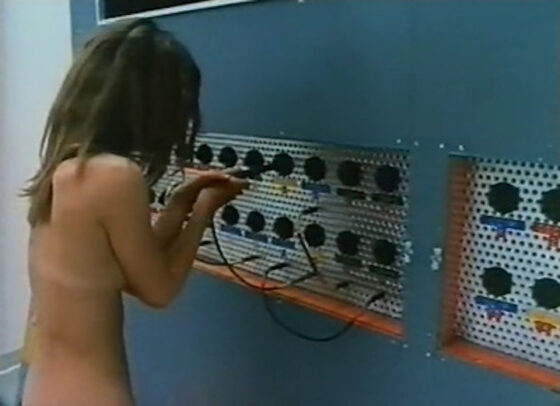Exploded View: Peter Fonda’s Idaho Transfer
By Chuck Stephens
“A useless piece of drivel about an obnoxious group of teens who get ‘teleported’ into the future, where they are expected to set up a new civilization in Idaho.” —Motion Picture Guide, author and edition unknown, found on the apparently abandoned Idaho Film Commission website from 2009
The late Peter Fonda—actor, celebrity, experimental filmmaker, activist, head—never actually did enjoy an easy ride, career-wise. Onscreen and behind the camera, he had brilliant flashes and boyish enthusiasms, often in the same sweet breath. His work was uneven, sometimes even unseemly, but always, always beautiful in prismatic and evanescent ways, part and parcel of the pacific dreams and bitter disappointments of his day. The above-quoted drivel, from a critic I’ve left un-Googled, typifies much of the appreciation that Fonda (1940-2019) was awarded as a filmmaker in his time. Of course, Fonda’s drifty, poetic directorial debut The Hired Hand (1971), a Western co-starring his close friend Warren Oates, has seen its reputation resurrected, as reflected by Arrow’s recent extras-laden Blu-ray. But leaving aside for the moment any further discussion of his third and final feature as director Wanda Nevada (1979), a return to the oater starring 13-year-old Brooke Shields in her Pretty Baby (1978) follow-up, a single question remains: Wherefore art thou, Idaho Transfer (1973)?
A no-budget, deeply-stoned dystopian cousin to flower-power future shocks like John Carpenter’s Dark Star (1974) and Jim McBride’s Glen and Randa (1971), Idaho Transfer is a troubling puzzle of hippie bewilderment, written by little-known Thomas Matthiesen in the zonked and indeterminate Richard Brautigan/Rudy Wurlitzer prose stylings of the day. On the surface, it’s mainly about time travel beyond a moment of imminent environmental collapse, and how fucked-up time travel usually turns out to be, and as such is a granddaddy to Primer (2014). It’s also, thematically if not stylistically, of a piece with Richard Fleischer’s eco-awfulness sci-fi masterwork Soylent Green (1973), which was in theatres the same year. Never mind where all the flowers have gone; guess who’s going to be dinner was more the question of the day.
But for all the film’s starved-earth hand-wringing and gorgeously desolate lava-bed landscapes, and avoiding altogether its quasi-Twilight Zone final narrative stinger, the reality is that Idaho Transfer is a movie mainly all about how incredibly lithe and lovely its stars Kelley Bohanon and Caroline Hildebrand are when they pull off their specially designed future-jeans and straddle a hi-tech weightlifting bench, something that travel via the trans-Idaho express apparently demands. Like Ripley in her Alien (1979) panties, Bohanon’s emotionally fragile Karen and Hildebrand’s biker chick-tough Isa bound blessedly dishabille across the time/space barrier. Space exploration or spicy exploitation: does anyone really care? In the words of Neil Young, “She said, ‘You’re strange, but don’t change,’ and I let her.”
You can go and watch Idaho Transfer on the YouTube right now. The film’s copyright lapsed into public domain decades ago, and restoration is unlikely—who even knows where the elements are? It’s a film that, perhaps fittingly, appears destined to be lost to an obliterated time. Fonda was 32 when he made it. He still had plenty of Easy Rider (1969) money, but The Hired Hand hadn’t fared well on release, critically or commercially, and Fonda and his producing partner William Hayward wanted a project they could mount on the cheap: Idaho Transfer, cast with unknowns and never-would-be’s alongside sole semi-star Keith Carradine, cost $150,000 by Fonda’s recollection. It didn’t recoup its budget. It was shot by Bruce Logan, who’d done visual effects on 2001: A Space Odyssey (1968), some mid-’70s films for Roger Corman, and is still working today. Charles McLelland edited it, in between gigs on Jack Hill’s Coffy (1973) and Foxy Brown (1974). When I see Idaho Transfer today, and I’ve seen it a dozen times or more, I see echoes of the films of Will Hindle, particularly Saint Flournoy Lobos-Logos and the Eastern Europe Fetus Taxing Japan Brides in West Coast Places Sucking Alabama Air (1970): gorgeously photographed, mostly unknowable, filled with ominous longhairs stumbling across a blasted landscape. A knife comes out, shit goes down. Rest in peace, Heavenly Blues. Idaho is a state of mind.
Chuck Stephens


